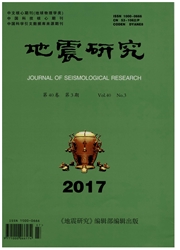

 中文摘要:
中文摘要:
基于我国台湾地区SMART-1密集台阵强震记录资料和Kameda的时变功率谱模型,利用多重滤波技术和非线性最小二乘法拟合得到每条记录的Kameda模型参数值;通过分析模型参数随频率变化的散点图分布规律,建立了时变功率谱模型参数随频率变化的随机模型。采用随机振动理论和多元统计分析方法,分析了沿波传播方向距离、垂直于波传播方向距离及测点所在位置土层厚度等局部空间位置变化对时变功率谱模型参数的影响规律,探讨了时变功率谱模型参数的空间分布形式,建立了各模型参数随空间坐标变化的随机预测模型,从而为重大工程多点输入地震动参数的确定和多点输入加速度时程的合成提供实用模型。
 英文摘要:
英文摘要:
Based on the strong-motion datasets of SMART-1 array and Kameda's evolutionary power spectral model, the evolutionary power spectral of earthquake ground motions were calculated by using multi-filter technique. Each parameter of the Kameda's evolutionary power spectral model were fitted by nonlinear least squares fit. Stochastic model of each parameter varying with frequency were constructed by analyzing the distribution law of spot figures of parameters varying with frequency. The spatial variability stochastic prediction models were stud- ied by analyzing the influence of the variation of planar coordinate and soil thickness. Results gained in this pa- per can be applied to non-stationary, multi-point ground motion simulation.
 同期刊论文项目
同期刊论文项目
 同项目期刊论文
同项目期刊论文
 期刊信息
期刊信息
